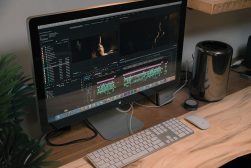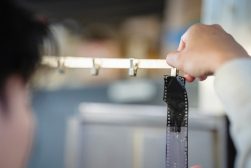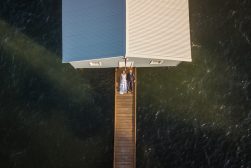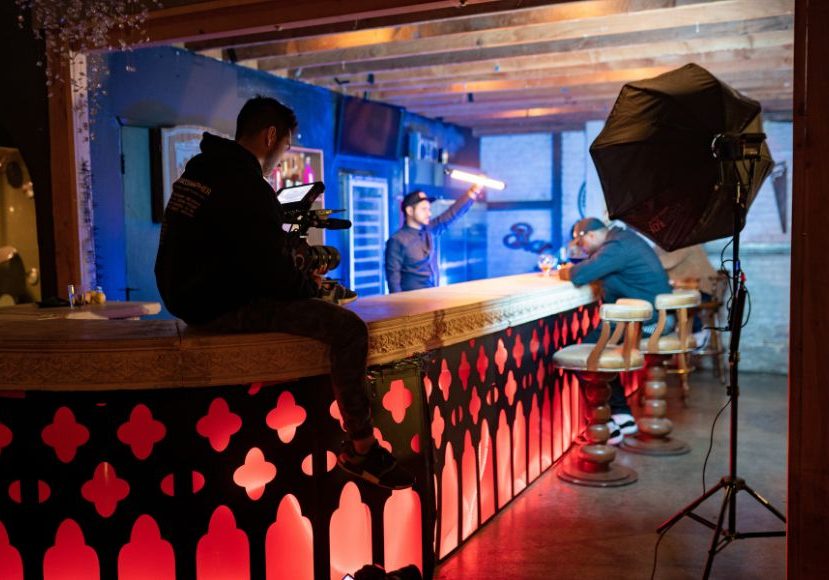
How to use a Two-Shot in Films (+ Examples)
Dive into the nuances of the two-shot technique in films, complete with practical guidance and iconic examples for effective storytelling.
Mastering the two-shot in film allows you to artfully convey interpersonal dynamics between characters.
Through this technique, you can effectively capture subtleties in emotion, body language, and character development.
In this article, we’ll discuss everything you need to know about the two-shot in film, from its definition and purpose to its role in enhancing storytelling.
Table of Contents
What Is a Two-Shot in Film?
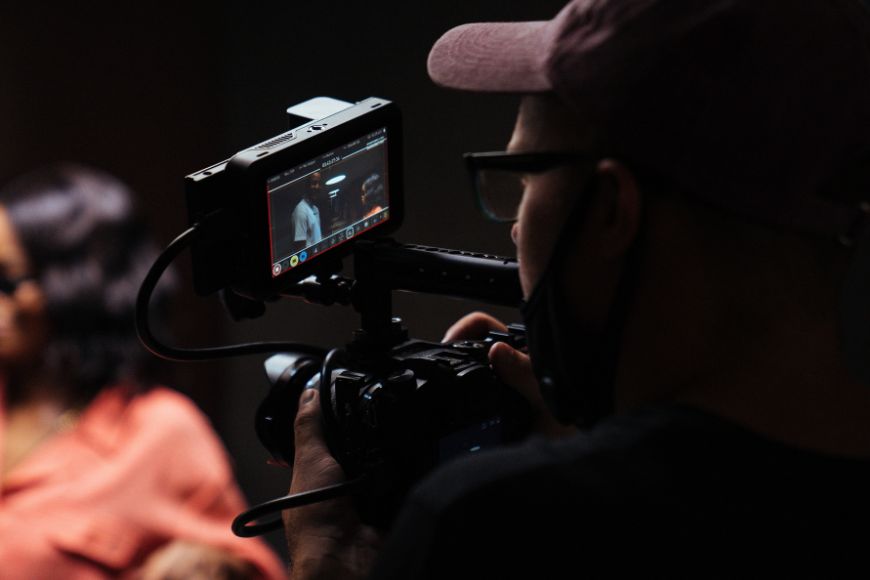
In cinematography, a two-shot is a camera shot that shows two subjects in the same frame.
It’s often used to show a connection between two characters.
This camera shot has been around since the 1920s, with one of the first usage examples appearing in Fritz Lang’s 1927 silent film Metropolis.
Lang used a two-shot to visually convey the relationships and interactions between the characters in the sprawling cityscape.
However, it wasn’t until the 1950s that the two-shot began to gain widespread popularity in television and film.
During this period, writers and directors started to appreciate the worth of stories with character depth and emotional complexity.
This made the two-shot a valuable tool for conveying character dynamics.
Because of these developments, the two-shot became a common and versatile tool in filmmaking.
It gave filmmakers the ability to deepen character relationships, whether it be conflict, romance, or friendship.
How to Effectively Use Two-Shot in a Film
Effectively using a two-shot in film goes beyond placing two characters in a single frame.
When used correctly, this method has the power to convey a spectrum of emotions, dynamics, and key story elements.
Here are some key considerations for using a two-shot in film.
Distance
From a storytelling standpoint, the distance between the subjects affects the scene’s meaning and significance.
Closeness could indicate friendship, intimacy, or a budding romance, while a substantial space in between may suggest conflict, friction, or discomfort.
Position your characters at an appropriate and adjust your camera distance as you see fit.
Framing and Composition
Both characters should be visible and properly framed. Don’t cut off parts of their bodies or faces.
Use the rule of thirds to create a visually appealing and dynamic composition.
Align the characters with one of the imaginary lines that divide the frame into thirds.
Camera Movement
The camera movements in a two-shot scene can influence an audience’s perception of the characters, their relationship, and the tone of the scene.
In dialogue-heavy scenes, a static shot, where the camera doesn’t move or change position, can be used to create suspense, anticipation, and other emotional effects.
A static shot also allows the audience to focus on the characters themselves, their body language, their expressions, and the subtleties in performance.
On the other hand, a lateral camera movement like panning, where the camera is moved horizontally from one side to another, can create a sense of shared perspective.
For example, if the characters are looking at something off-screen, panning the camera in the direction of their gaze can make the audience feel as though they’re looking in the same direction.
Camera Height
When the camera is positioned above the characters, it can make them appear small and submissive.
This angle can convey vulnerability, fear, or powerlessness in one or both characters.
Conversely, a low-angle shot positioned below the characters can make them appear larger and more dominant.
Finally, placing the camera at eye level establishes a feeling of equality and emotional intimacy between the characters.
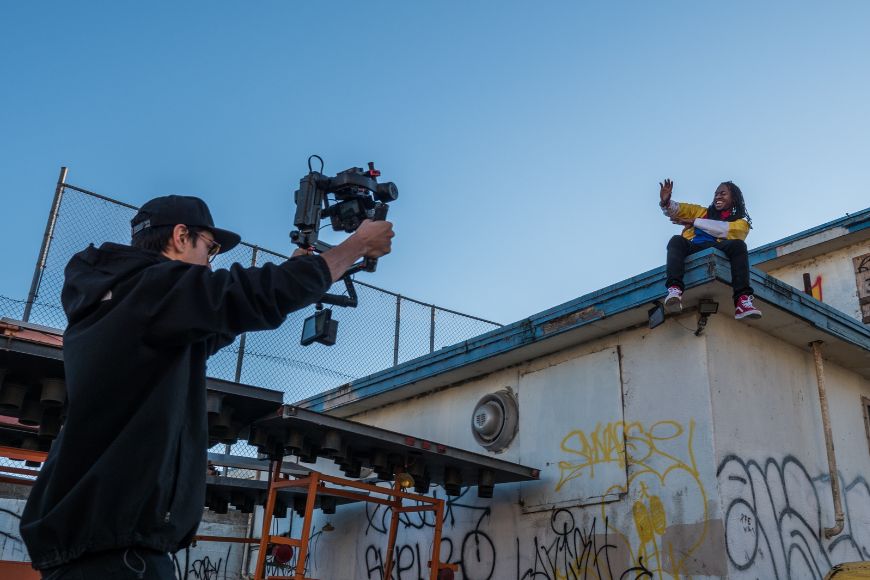
Why Use a Two-Shot in Film
The primary purpose of a two-shot is to show the emotions and reactions of two people in a scene. As a filmmaker, you can play around with what the two-shot conveys.
Here are some reasons to use this technique in a film:
To Convey Emotion and Relationship Dynamics
By framing two characters in a single shot, you can visually depict the nuances of their interactions, whether it’s the sparks of conflict or hints of affection.
If two subjects are far apart in a two-shot, it could indicate that they feel distant or uncomfortable around each other.
You can use this as a method of storytelling: the characters may start off close and touching but slowly grow farther apart throughout the movie.
In scenes where two characters are in conflict or having an argument, a two-shot can emphasize the distress and tension between them.
This is brilliantly portrayed in the fight scene in The Notebook, where the protagonists—Allie and Noah—engage in a passionate and emotionally charged argument.
Two-shot is also commonly used to highlight the romantic connection between two characters as they share an intimate moment.
For example, if one character admits their undying love for another, a two-shot can show viewers the non-speaking character’s reactions to the confession.
In buddy cop films or stories involving partnerships, a two-shot can highlight the camaraderie and teamwork between the two main characters.
To Emphasize Character Differences
By placing characters side-by-side, the emotional and ideological disparities between characters become more evident.
For example, one character’s reserved and conservative nature is further emphasized when positioned next to someone spontaneous and adventurous.
To Highlight Intimate Actions
A two-shot can magnify physical and emotional intimacy.
When two characters share a kiss within this frame, it lets you capture every fleeting emotion and nuanced expression, making the scene even more impactful.
You can also use this technique during fight scenes.
By framing both combatants within the same shot, the viewers get a front-row seat of the battle. They’ll witness every strike, parry, and dodge between the characters.
5 Examples of the Two-Shot Technique in Film
Here are some good examples of two-shot in film:
Pulp Fiction: Elevator Scene
Quentin Tarantino’s Pulp Fiction is an excellent study of properly using the two-shot technique in film. One example is the scene in the elevator where Vincent and Jules engage in conversation.
As Vincent and Jules talk about seemingly innocuous topics, the camera stays centered between them.
The camera is lowered ever so slightly, adding a touch of self-confidence and assurance to complete the mission they were sent to do.
Lost in Translation: Bob and Charlotte Meet
Sofia Coppola uses a two-shot technique throughout the film.
In this particular scene, Bob and Charlotte meet for the first time in a dimly lit Tokyo hotel bar. They sit side by side, with a polite distance between them.
The two-shot places the audience at eye level with the characters, allowing them to empathize and connect with Bob and Charlotte as they talk.
The camera stays locked on their shared frame, emphasizing their glances, smiles, and blooming spark of connection.
La La Land: A Lovely Night
The musical scene in Damien Chazelle’s La La Land is a testament to the unity and symmetry of Sebastian and Mia’s connection.Framed side by side, the audience sees their facial expressions, unspoken chemistry, and the playfulness of their dance.
The Matrix Reloaded
In The Matrix Reloaded, there’s a scene where Neo and Agent Smith stand locked in a confrontation.
Positioned squarely in the frame in a full body, they face each other with unwavering determination, the intensity of their gazes serving as a visual metaphor for their ideological clash.
The hushed silence that follows accentuates the gravity of their encounter. The calm before the storm is palpable, drawing the audience deeper into the narrative.
The Raid Redemption: Mad Dog vs. Jaka
One of the many scenes that stood out in Gareth Evan’s The Raid: Redemption was the confrontation between Mad Dog and Jaka.
The hand-to-hand combat is quick, dynamic, and unforgiving. Throughout the scene, the combatants get up close and personal, blurring the lines of aggressor and defender.
Close-up shots focus on the characters’ grimacing faces, sweat-soaked bodies, and fiery determination to win the one-on-one battle.
Other Types of Camera Framing
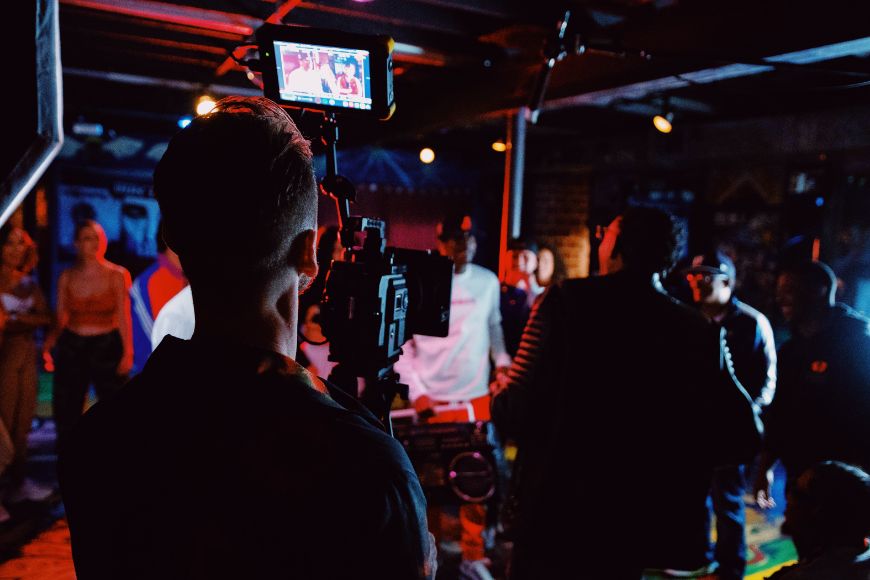
Apart from the two-shot, there are three other camera framing types to look into.
Single Shot
Also known as a single-frame shot, this type of shot focuses on a single subject or element within the frame.
It’s used to add emphasis or convey the significance of a character, an object, or a detail.
Single-frame shots can either be dynamic or static. You can film it in varying types of shots (even filmed vertically), depending on the effect you want to achieve.
This could be a medium shot, a wide shot, or a shoulder shot.
Three Shot
As the name suggests, a three-shot involves framing three subjects within a single shot.
Like the two-shot, it’s commonly used in dialogue scenes where multiple characters are interacting.
The placement and composition of these three subjects can convey information about their dynamics, emotions, and relationships.
Point of View Shot
A Point of View (POV) shot depicts what a character is seeing or experiencing from their point of view.
It pulls the audience into the character’s perspective, enabling them to experience what’s unfolding on the big screen.
This technique is especially effective in eliciting empathy, building suspense, or creating tension, as it enables the viewers to connect with the character’s reactions, feelings, and thoughts.







